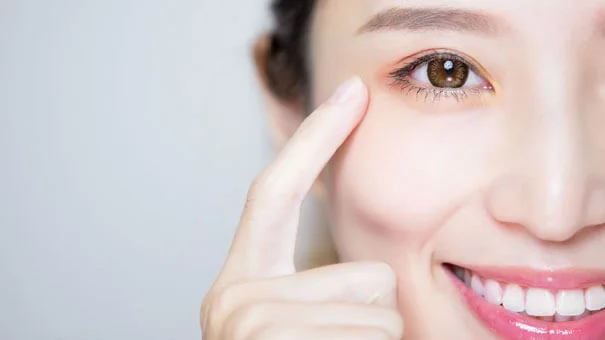MiboFlo: Treatment for Dry Eyes
MiboFlo is a revolutionary treatment for dry eyes that targets the root cause of discomfort by addressing blocked meibomian glands. By using gentle heat and pressure, MiboFlo effectively clears these glands, restoring the natural balance of tears in the eyes. This innovative therapy provides long-lasting relief from dry eye symptoms, including irritation, redness, and blurred vision.
Read on to discover how MiboFlo works, its safety and efficacy, and why it’s becoming a preferred choice for those suffering from dry eye syndrome.
What is MiboFlo?
MiboFlo utilizes advanced technology to alleviate dry eye symptoms by targeting blocked meibomian glands. These glands, responsible for producing the oily layer of tears, can become clogged, leading to inadequate lubrication and discomfort.
MiboFlo employs a combination of gentle heat and pressure to clear these blockages effectively. The application of heat softens the hardened oils, while the gentle pressure massages the glands, allowing the oils to flow freely and restore the tear film’s natural composition. By addressing the root cause of dry eyes, MiboFlo provides lasting relief from dry eye symptoms like irritation, redness, and blurred vision.
Learn more about dry eye symptoms, causes, and treatment options.
Comparing MiboFlo with Other Dry Eye Treatments
There are two main procedures available for those suffering from dry eyes: MiboFlo and Intense Pulsed Light (IPL) therapy. These treatment options offer unique benefits and drawbacks.
MiboFlo treatment specifically targets meibomian gland dysfunction (MGD), addressing the root cause of dry eye symptoms by clearing blocked glands and improving tear quality. It provides long-lasting relief and has minimal discomfort during treatment. IPL therapy, on the other hand, targets inflammation in the eyelids and surrounding areas, which can indirectly improve MGD symptoms.
Ultimately, the choice between MiboFlo and IPL therapy depends on individual factors such as the severity of MGD and patient preferences. Both treatments have their merits, and consulting with an eye care professional can help determine the most suitable option.
Learn more about IPL therapy for dry eye disease.
Cost and Accessibility of MiboFlo Treatments in Georgia, USA
MiboFlo costs in Georgia can vary, typically ranging from $300 to $500 per session, depending on the clinic and severity of the condition. Multiple sessions may be required for optimal results.
Insurance coverage for MiboFlo is variable; while some insurers may cover the procedure under medical necessity for treating meibomian gland dysfunction, others may not. Check with your insurance provider for specific coverage details.
Our eye doctors in Georgia believe in making quality eye care accessible to everyone. That’s why we accept a range of insurance plans and offer financing options to help manage treatment costs and offer our patients the flexibility they need.
Learn more about insurance benefits and financing at Classic Vision Care.
Finding MiboFlo Treatment Near Me
If you’re looking for dry eye treatment options in Georgia, our experienced eye doctors at Classic Vision Care perform MiboFlo at our clinics in Marietta and Kennesaw. To schedule an appointment and discuss your symptoms and solutions, call us on (770) 499-2020 and (678) 560-8065, respectively.
What to Expect from a MiboFlo Session at Classic Vision Care
During a MiboFlo eye treatment session at Classic Vision Care, you can expect a comfortable and efficient experience, typically lasting around 15 to 20 minutes per eye. You’ll recline comfortably while a specialized device gently applies controlled heat and pressure to the eyelids. This process effectively liquefies and expresses the obstructive oils from the meibomian glands, improving tear quality and alleviating dry eye symptoms.
Throughout the treatment, you may feel a gentle warming sensation around the eyes, but the procedure is generally well-tolerated with minimal discomfort. Afterwards, you can resume your normal activities immediately. Some patients experience immediate relief, while others notice gradual improvements in dry eye symptoms over the following days to weeks.
Our experienced eye care team will provide personalized guidance and support throughout the treatment process to ensure optimal results.
Safety and Side Effects of MiboFlo
MiboFlo treatments are considered safe, with minimal risk of side effects. However, some patients experience mild discomfort or redness around the eyes during or after the procedure, which typically resolves quickly. In rare cases, temporary eyelid swelling or sensitivity to light may occur but usually subsides within a few days. Patients with pre-existing eye conditions or allergies should inform their eye doctor before undergoing MiboFlo.
Overall, the safety profile of MiboFlo is favorable, and most patients can undergo the procedure with confidence, enjoying improved eye comfort and vision without complications.
The Future of MiboFlo Treatments
The future of MiboFlo holds promise for further advancements in addressing dry eye syndrome. Ongoing research aims to enhance the efficacy and accessibility of MiboFlo technology, while advancements in device design and engineering may lead to more comfortable and efficient treatment experiences for patients. Future developments may also focus on expanding the applicability of MiboFlo to treat a wider range of ocular conditions.
As research continues to evolve, potential patients can look forward to improved outcomes, shorter treatment durations, and greater convenience, ultimately leading to better quality of life for those suffering from dry eye symptoms.
Innovations in MiboFlo Research
Recent studies and trials in MiboFlo treatments have showcased exciting innovations in addressing dry eye syndrome. Research has explored the efficacy of combining MiboFlo with other therapies, such as LipiFlow, to optimize outcomes for patients with more severe or refractory cases of dry eyes. Ongoing research focuses on personalized treatment approaches, tailoring MiboFlo protocols to individual patient needs based on factors like gland morphology and tear composition. These advancements represent promising strides in the field of dry eye management, providing hope for improved outcomes and enhanced patient satisfaction.

